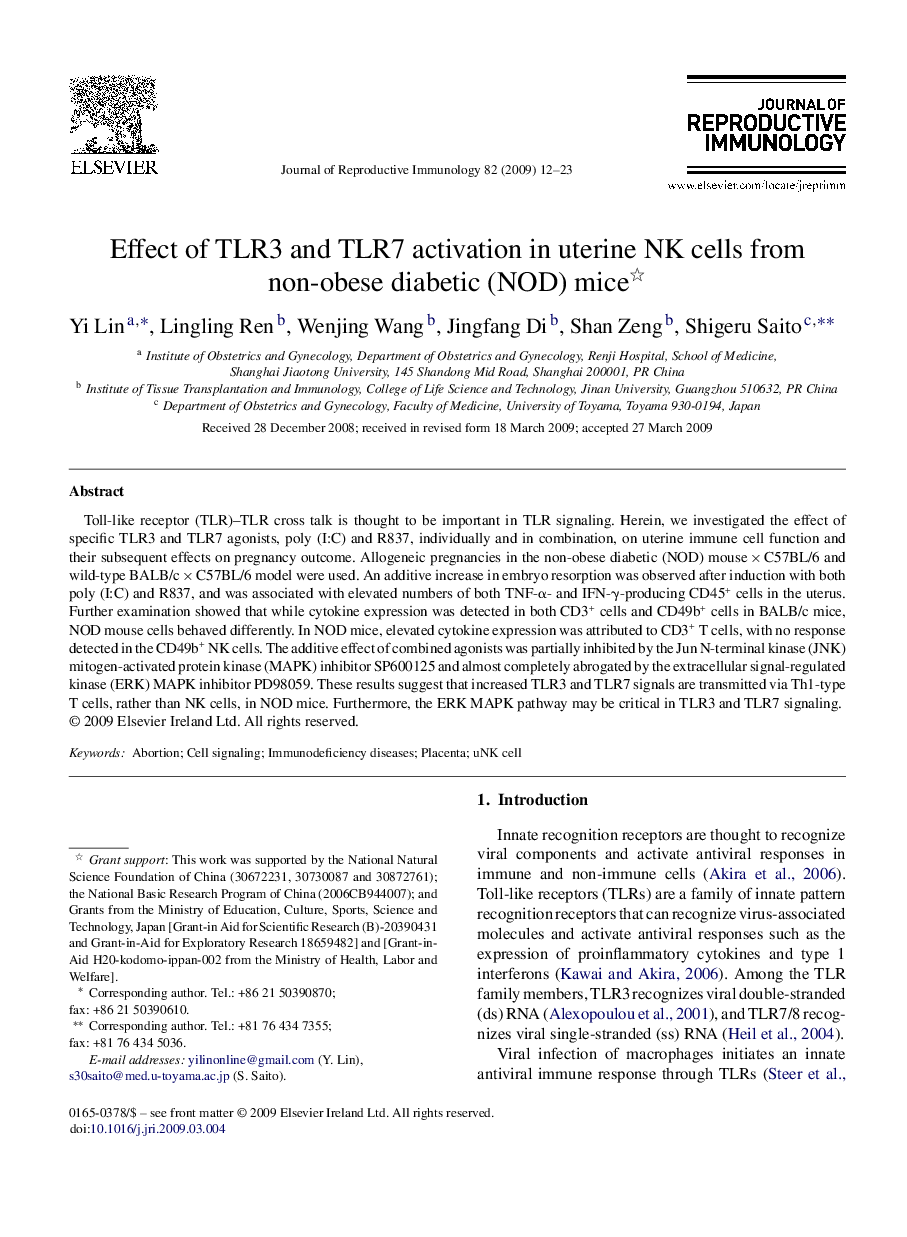| کد مقاله | کد نشریه | سال انتشار | مقاله انگلیسی | نسخه تمام متن |
|---|---|---|---|---|
| 3961873 | 1255626 | 2009 | 12 صفحه PDF | دانلود رایگان |

Toll-like receptor (TLR)–TLR cross talk is thought to be important in TLR signaling. Herein, we investigated the effect of specific TLR3 and TLR7 agonists, poly (I:C) and R837, individually and in combination, on uterine immune cell function and their subsequent effects on pregnancy outcome. Allogeneic pregnancies in the non-obese diabetic (NOD) mouse × C57BL/6 and wild-type BALB/c × C57BL/6 model were used. An additive increase in embryo resorption was observed after induction with both poly (I:C) and R837, and was associated with elevated numbers of both TNF-α- and IFN-γ-producing CD45+ cells in the uterus. Further examination showed that while cytokine expression was detected in both CD3+ cells and CD49b+ cells in BALB/c mice, NOD mouse cells behaved differently. In NOD mice, elevated cytokine expression was attributed to CD3+ T cells, with no response detected in the CD49b+ NK cells. The additive effect of combined agonists was partially inhibited by the Jun N-terminal kinase (JNK) mitogen-activated protein kinase (MAPK) inhibitor SP600125 and almost completely abrogated by the extracellular signal-regulated kinase (ERK) MAPK inhibitor PD98059. These results suggest that increased TLR3 and TLR7 signals are transmitted via Th1-type T cells, rather than NK cells, in NOD mice. Furthermore, the ERK MAPK pathway may be critical in TLR3 and TLR7 signaling.
Journal: Journal of Reproductive Immunology - Volume 82, Issue 1, October 2009, Pages 12–23